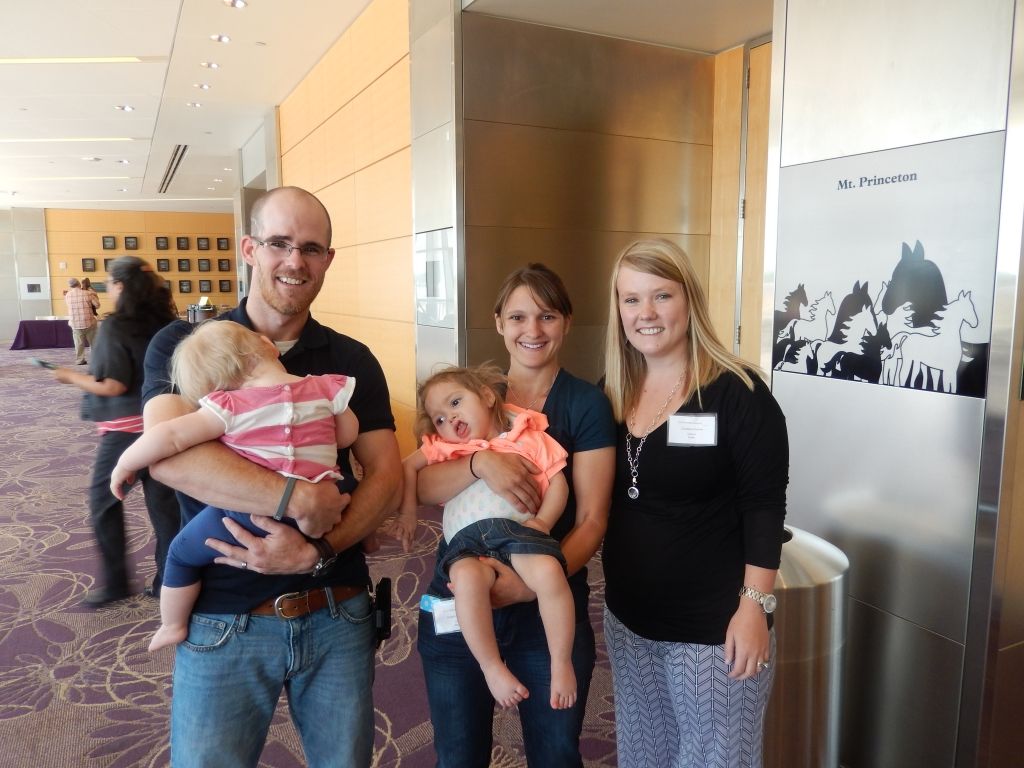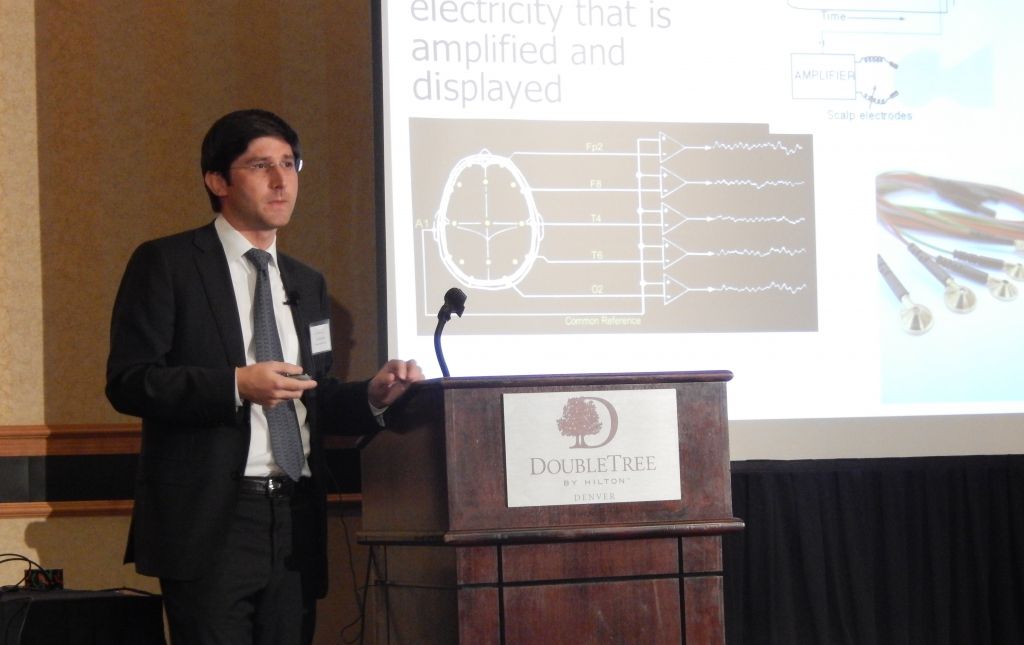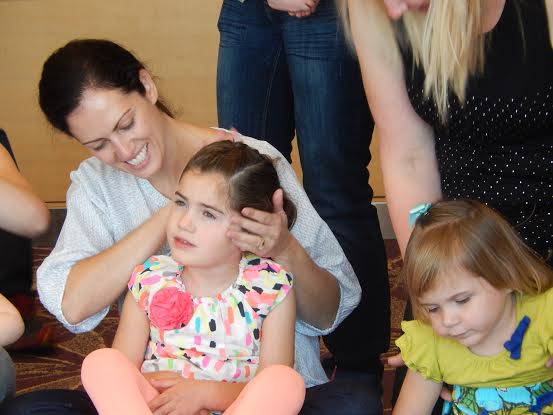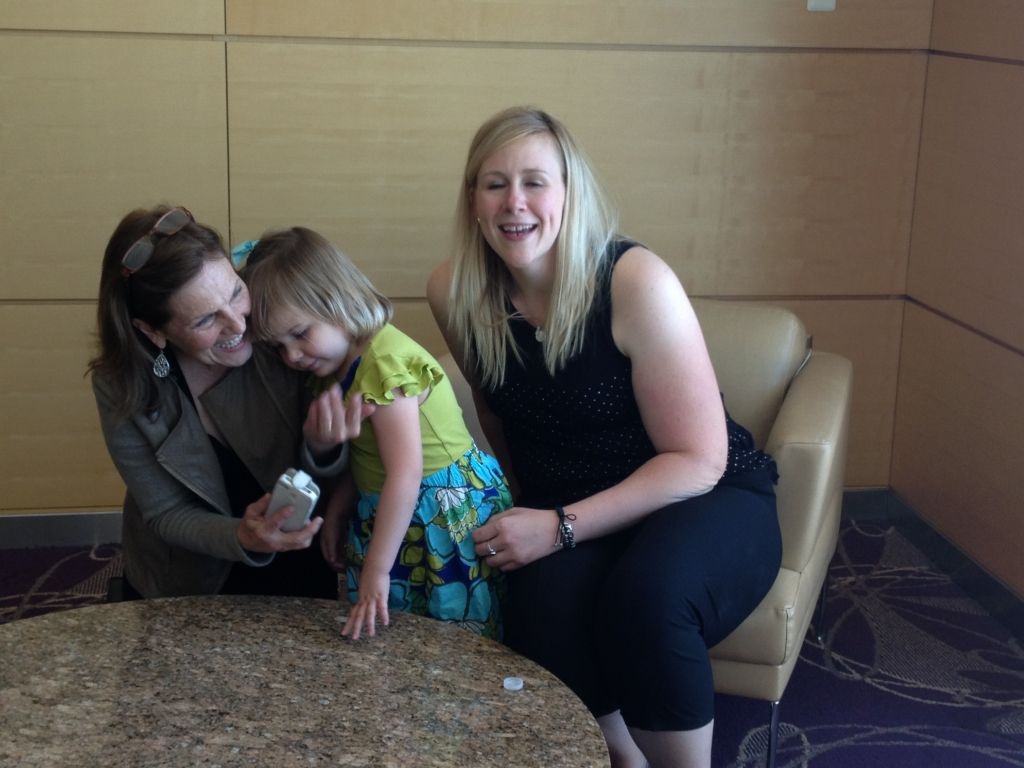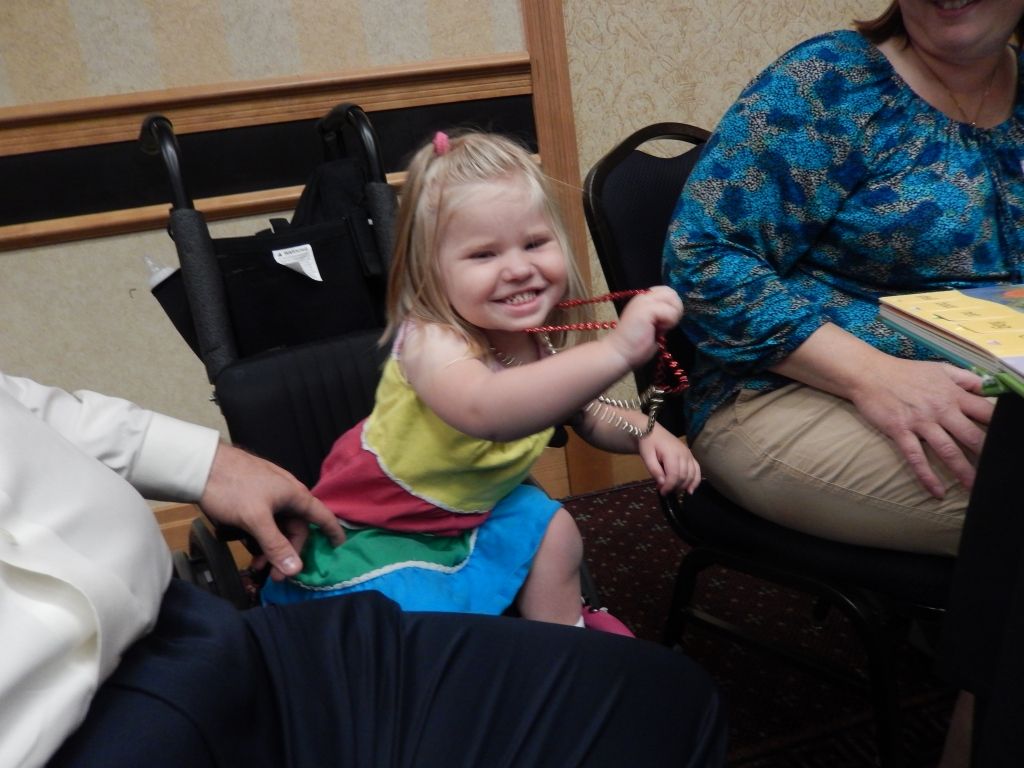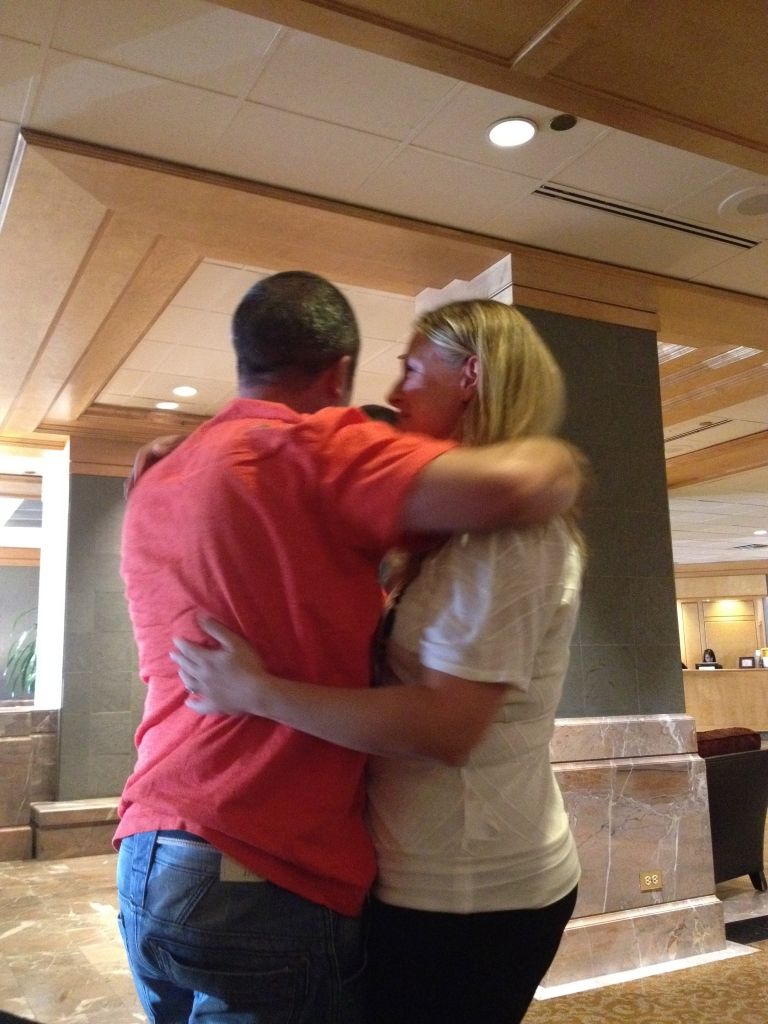- Details
- Written by Gina Vozenilek
- Category: News
- Hits: 9612
KCNQ2's Global Connections
We are excited to see KCNQ2 on the international stage with this fabulous news coverage. More than once we have been told by researchers and seasoned epilepsy advocates that the KCNQ2 community is viewed as a model of motivated families joining forces to drive medicine forward. It’s a big honor, and a bigger responsibility, to be thought of as an example of how to do things right. Because as Whole Exome Sequencing and other genetic testing becomes readily available, more and more families will arrive where we all were just a few short years ago, stuck with a strange alphanumeric diagnosis that offers precious little information, wondering where in the world to turn.

The Power of Parents Connecting
It is essential for the KCNQ2 kids that parents find the support they need. It’s like the old drill about the oxygen mask that falls in case of an in-flight emergency. The parents need to breathe before they can help their children. For parents who live in the rarefied atmosphere of raising a KCNQ2 kid, lifting one another up by sharing ideas, questions, frustrations, fears and joys is that oxygen.
Connecting for the Kids @AES 2015
The latest news piece speaks volumes about parents connecting, but behind the scenes there is another important story to tell. Simply put, these rare KCNQ2 kids have inspired the researchers themselves. Just a few years ago it was almost impossible to find anyone researching KCNQ2, and those who did were focused on theory and molecules. Now many of them have encountered real children who bear the gene. The scientists have someone, and not just something, to study. And they have looked into the eyes of the parents and seen their life’s work reflected there in new, urgent ways.
This human connection has compelled the experts to greater levels of professional collaboration. Breaking out of their individual "silos," they too are redefining new cooperative models for advancing the science: They are sharing data, coauthoring papers, and writing grants together across the ocean. At the AES meeting in Philadelphia in a few weeks, thousands of doctors will hear more than ever before about KCNQ2 in the open sessions.
This year at AES a multinational team of KCNQ2 experts will meet in a daylong special session sponsored by grants from the National Institute for Neurological Disorders and Stroke (NINDS), Citizens United for Research in Epilepsy (CURE Epilepsy), and The Jack Pribaz Foundation. We are excited to learn what will emerge from this new worldwide collaboration. When you can bring motivated people together, good things are bound to happen for the KCNQ2 kids.
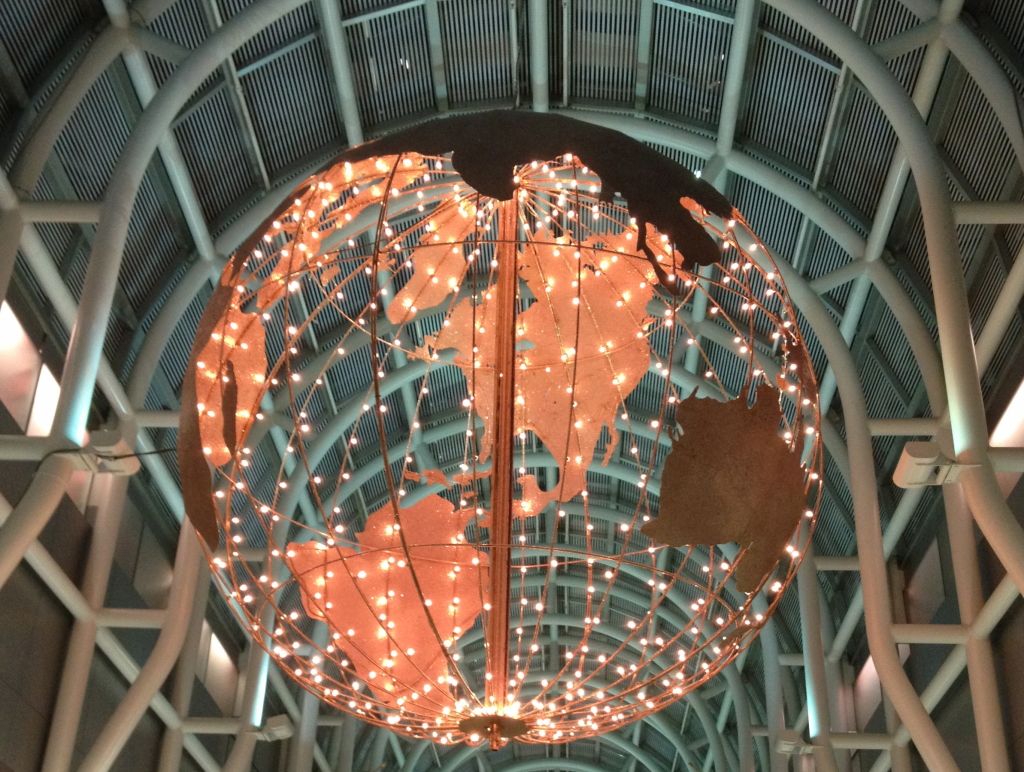
- Details
- Written by Jack's Army Admin
- Category: News
- Hits: 5972
On a Mission: AES Seattle
If you were a doctor or researcher working your way through the exhibition hall of the American Epilepsy Society’s Annual Meeting in Seattle last week, you would have noticed something new this year. For the first time, KCNQ2-related epilepsy was represented.
[caption id="attachment_761" align="aligncenter" width="540"]
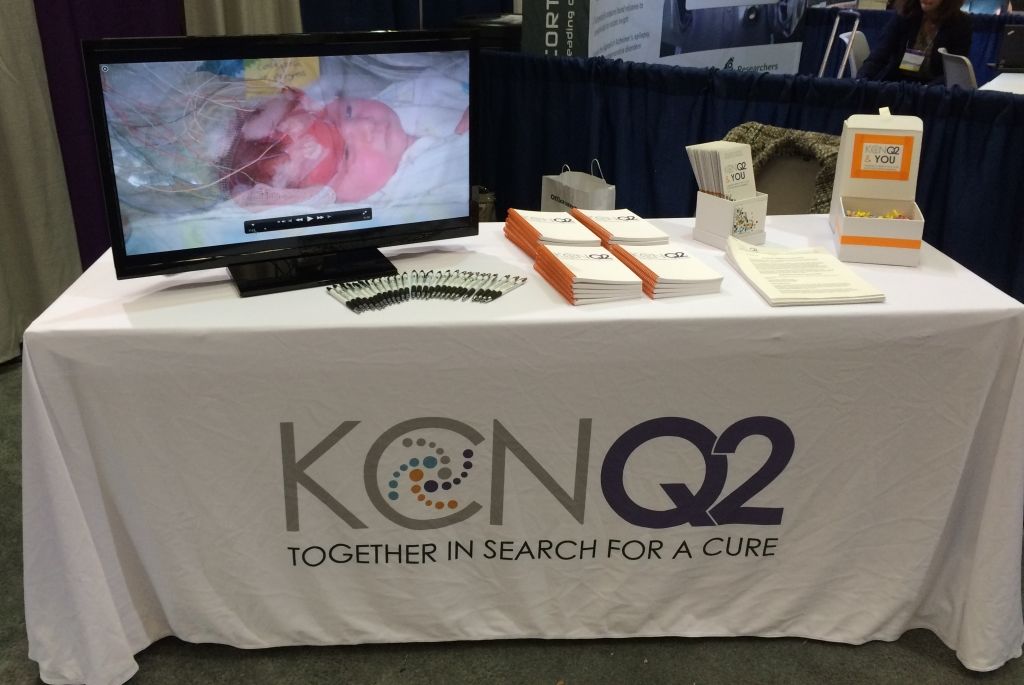 AES booth all set.[/caption]
AES booth all set.[/caption]The Jack Pribaz Foundation (JPF) sponsored a big corner booth and a banner that splashed our message overhead on a 20-ft. LED display.
[caption id="attachment_772" align="aligncenter" width="508"]
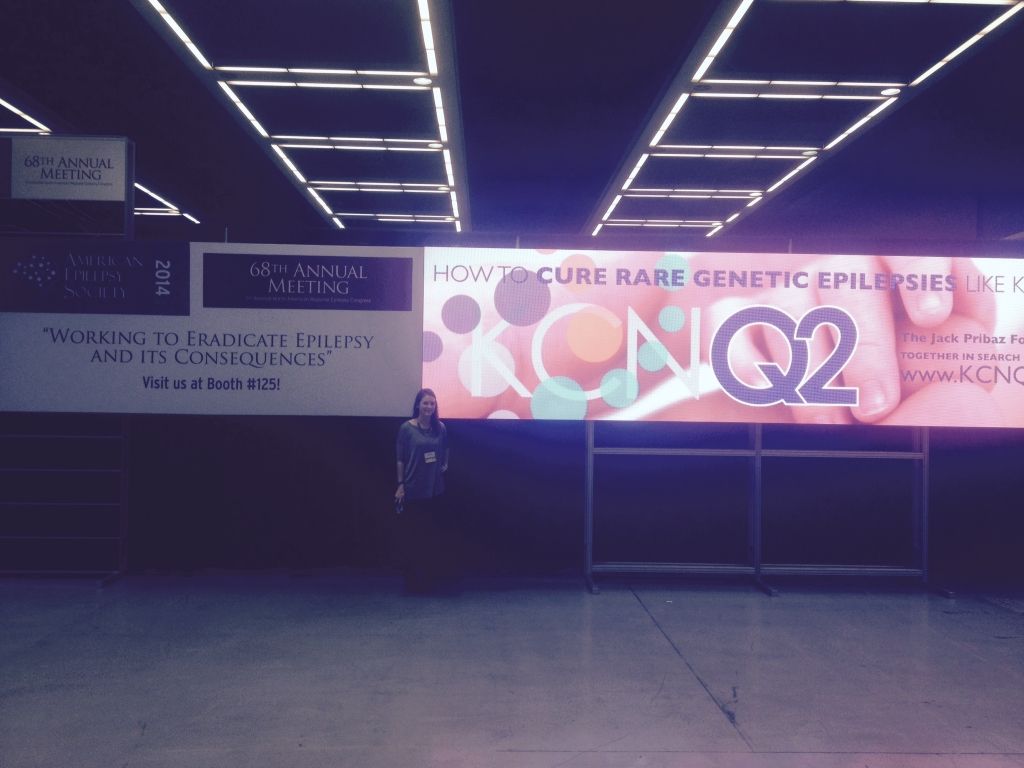 LED media wall, with Angela Cherry for scale.[/caption]
LED media wall, with Angela Cherry for scale.[/caption]With our purchase of the LED spot, we had exactly 15 seconds (looped repeatedly over three days) to catch the attention of the more than 4300 doctors and researchers, plus potential advocacy and industry partners, who wandered the exhibition hall. “KCNQ2” was on the screen for the entire spot, to help people get used to seeing it among the alphabet soup of rare genetic epilepsies: PCDH19 and CDKL15, for example, plus the better-named disorders and their interest groups that have been around longer, like Lennox Gastaut Syndrome, and Dravet Syndrome.
[caption id="attachment_758" align="aligncenter" width="422"]
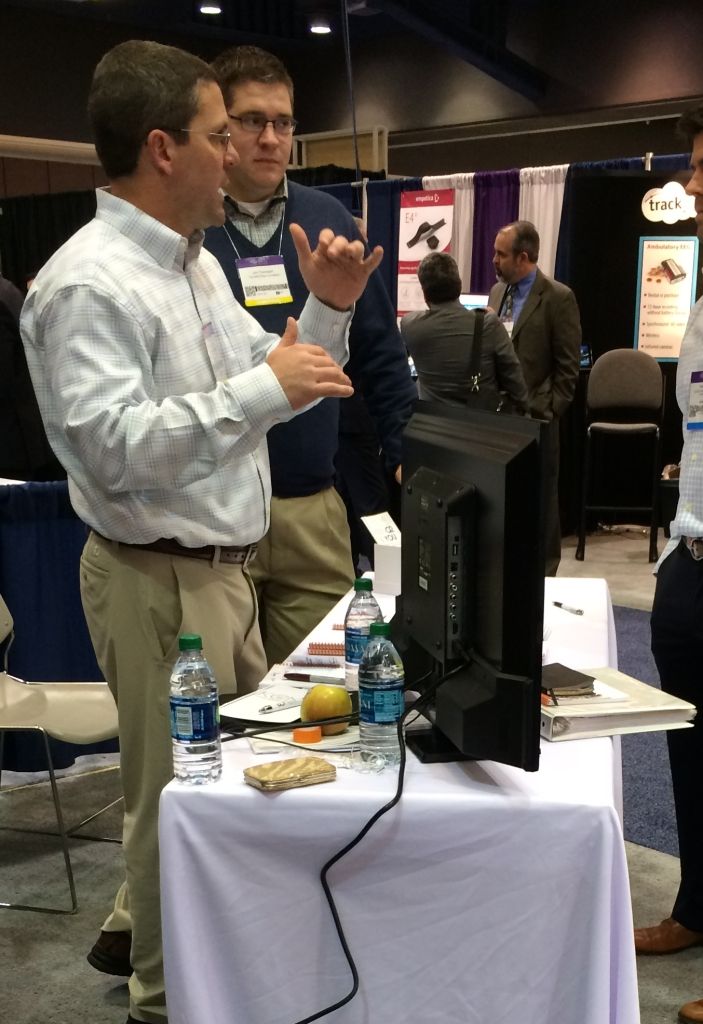 Dads Mike Pribaz and Jim Thompson engaging docs.[/caption]
Dads Mike Pribaz and Jim Thompson engaging docs.[/caption]In the LED banner ad we also animated the four-armed logo to reinforce our four strategic aims, which we came to Seattle to advance. So did we accomplish our mission?
1. Fund research.
In Seattle the JPF announced our new research grant application process. In the booth and online, instructions are now available for researchers who wish to write a letter of inquiry to initiate the process of applying for financial support. Our scientific advisory panel will help determine which proposals will merit funding.
2. Raise awareness.
“Have you heard of KCNQ2?”
[caption id="attachment_764" align="alignleft" width="457"]
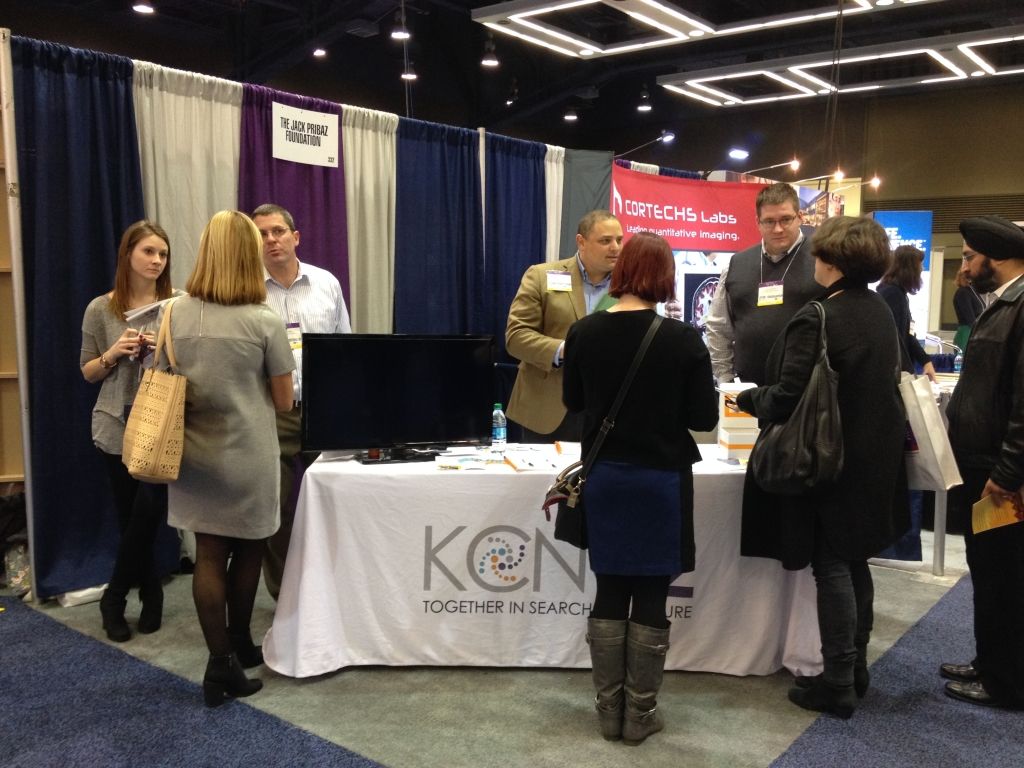 Busy booth![/caption]
Busy booth![/caption]Even though most of the doctors attending the AES meeting treat people with epilepsy, a fair number of them answered no to this question. We talked to hundreds of people, passed out pamphlets, pens, notebooks, and handshakes. Dozens of folks signed up to receive our free Q2 newsletter. And the reviewers who will be scoring Dr. Cooper’s Center Without Walls grant proposal are likely to have been there and will have noticed the flurry of interest that KCNQ2 was generating in the exhibit hall and in the research presented in the scientific sessions.
[vimeo id="113825447" width="600" height="350"]
3. Empower Parents.
We want to thank Jim Thompson, Annika’s dad, who volunteered to travel from Iowa to help us man the booth and work the crowd, which he did brilliantly. It was wonderful to get to spend time with him. Thanks, Jim!
In a way, Jim wasn't the only parent representing the KCNQ2 community with us. On the table in the booth we set up a monitor that looped the banner ad with the video Lisa Miller made this summer (see link) featuring the faces of so many of the KCNQ2 kids whose families have joined together in this cause. Many stopped by to watch it, to put sweet faces with the KCNQ2 name. The children have an important story to tell, and the medical community is starting to listen.
[caption id="attachment_760" align="alignright" width="258"]
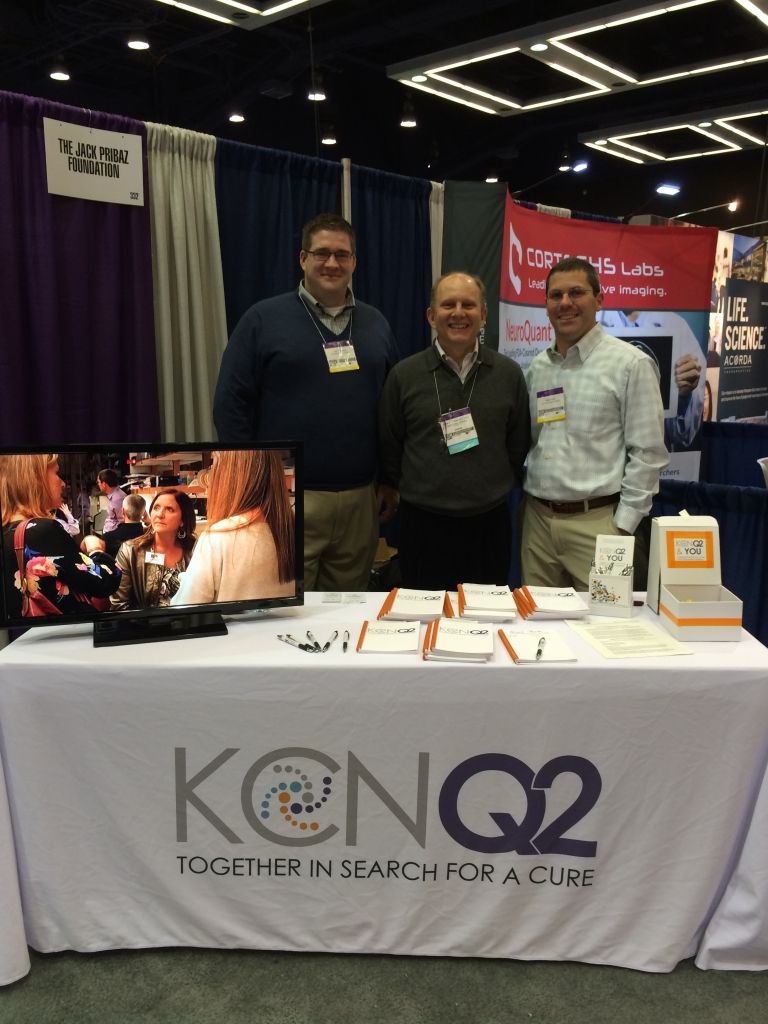 Jim Thompson, Dr. Ed Cooper, Mike Pribaz[/caption]
Jim Thompson, Dr. Ed Cooper, Mike Pribaz[/caption]There’s so much more work we can do together. Numerous visitors made it a point to tell us that this foundation work is important, that it truly helps move the ball forward. That was nice to hear, and we are proud to pass that praise right along to you, our partners who support us in big ways and small. #togetherinsearchforacure!
4. Create Collaboration.
In Seattle we networked with clinicians and researchers from across the nation and world. We met with our scientific advisers and some of their colleagues,and heard more about their work. We made some friends among the pharmaceutical set, too, and are following up with them about some exciting educational partnership ideas. Stay tuned.
But perhaps the most promising development at AES was being invited to attend a pre-conference meeting run by Professor Anne Berg of Lurie Children’s in Chicago. Together with several clinical, research, industry, and parent advocacy leaders in early life epilepsy, we talked about concrete ways we can collaborate.
[caption id="attachment_762" align="alignnone" width="428"]
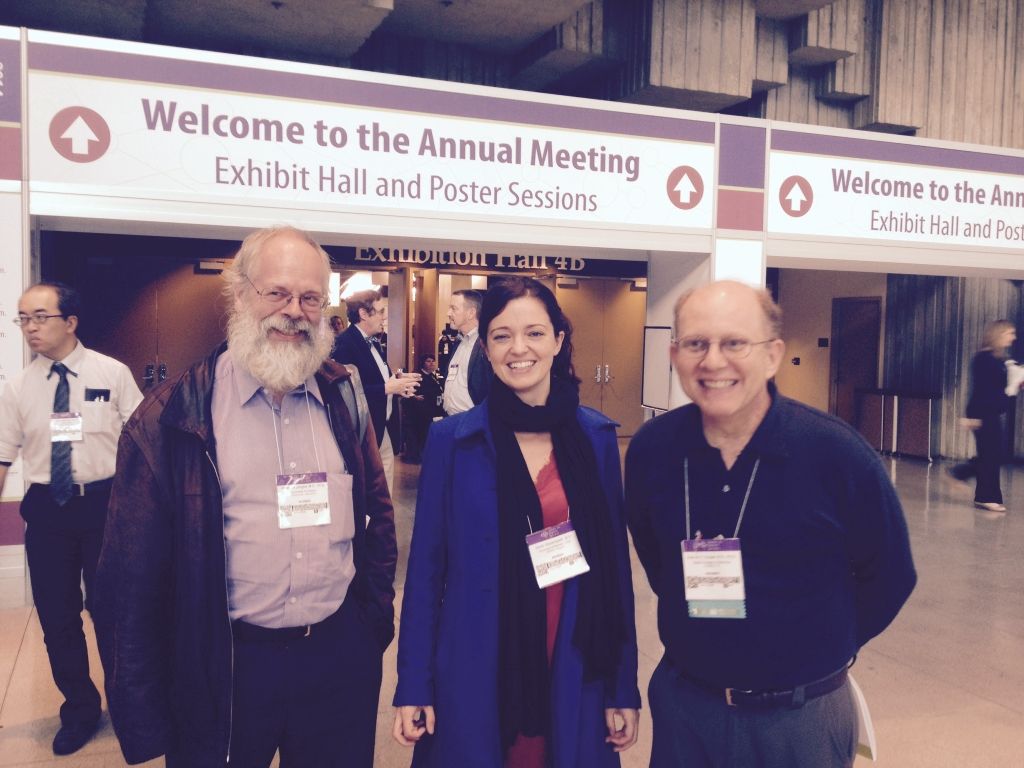 Drs. Peter De Jonghe, Sarah Weckhuysen, and Ed Cooper.[/caption]
Drs. Peter De Jonghe, Sarah Weckhuysen, and Ed Cooper.[/caption]While our different genetic conditions alone may be rare, the argument is starting to be made that, considered together, the kids who have early life epilepsies account for an important clinical population that needs more attention. How can our different groups find ways to work together toward common goals? In Seattle that conversation expanded to include new voices, and we are thrilled to have represented KCNQ2 among them.
- Details
- Written by Gina Vozenilek
- Category: News
- Hits: 4376
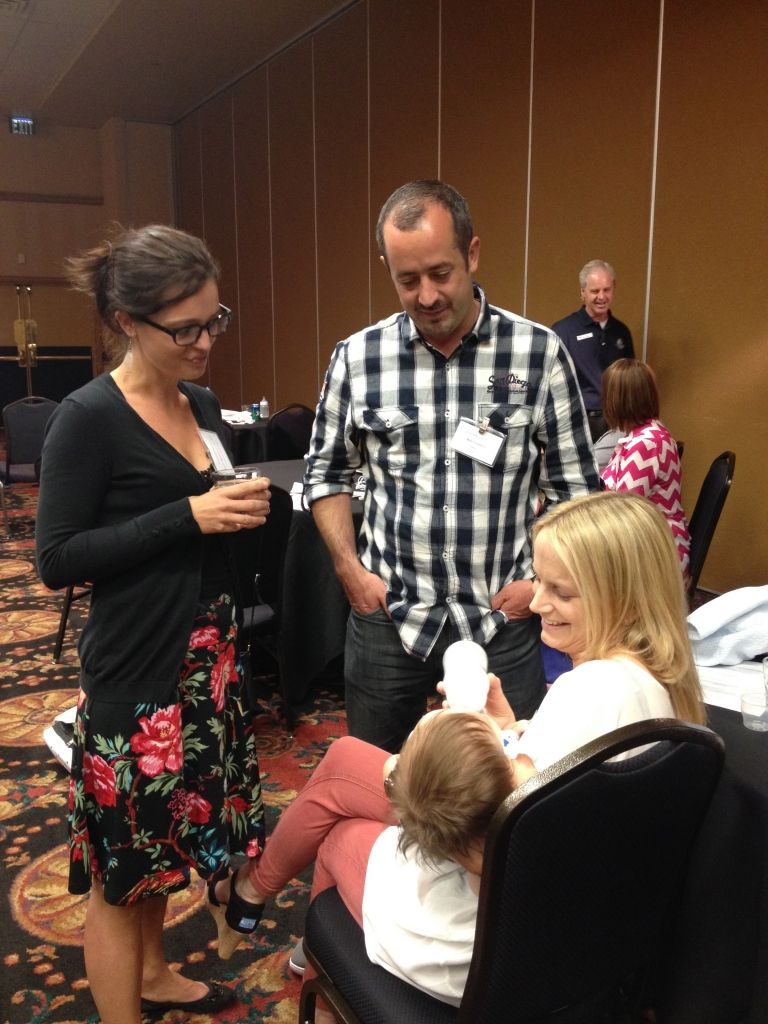 One dad said it almost like a kid who's been told the play date is over: "I'm not ready to go home." Before the Denver Summit was half finished, he was already dreading the inevitable return to normal life. It was understandable.
One dad said it almost like a kid who's been told the play date is over: "I'm not ready to go home." Before the Denver Summit was half finished, he was already dreading the inevitable return to normal life. It was understandable.There was something so empowering about being surrounded by a KCNQ2 crowd--a dozen or so children and families, plus siblings, grandparents, friends, doctors, and researchers.
Maybe it was the novelty of meeting other people who really know what life is like on Planet KCNQ2. They understand each others' superpowers and kryptonites. Or maybe it was the feeling of family reunion that permeated the Summit as parents posed for group shots and held each others' babies. Of course there was definitely something reassuring about seeing and hearing firsthand that brilliant, compassionate experts are hard at work on behalf of these children.
But perhaps most powerfully we sensed a brimming energy. We could feel a convergence of individual enthusiasm, like so many mirrored panels all focused on one bright tower. We were a KCNQ2 solar collector, each reflecting and concentrating light to convert it into usable energy.
NOW WHAT?
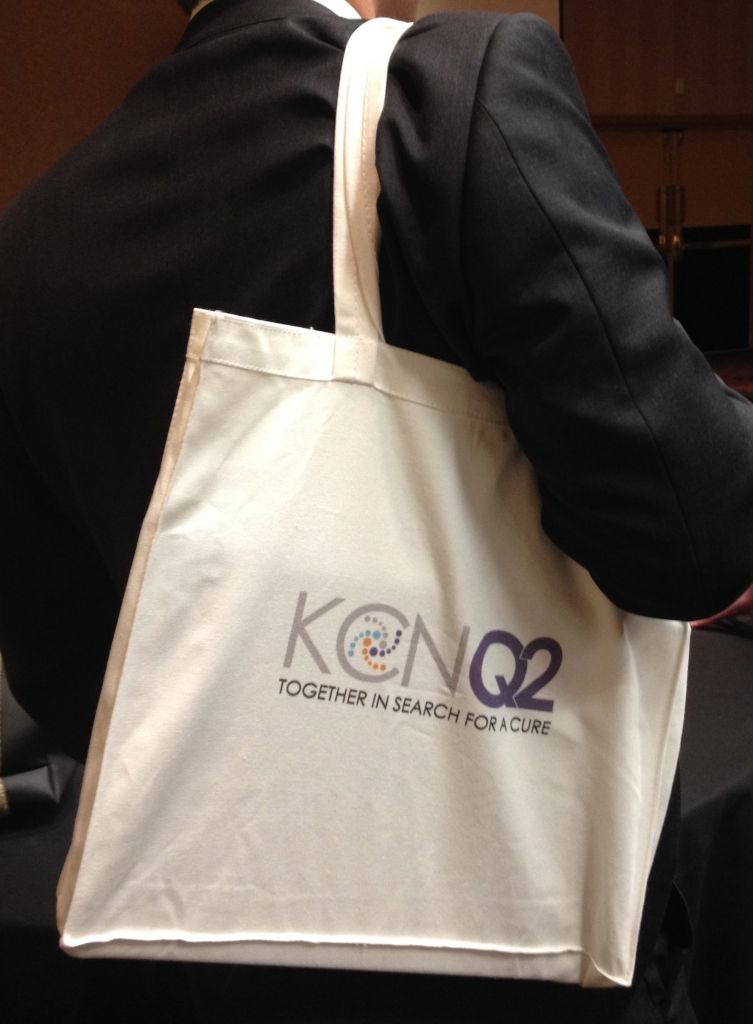
Coming down from altitude is never easy. The question now, on a Monday morning, is how can we use that energy going forward? How do we channel the spirit of the Summit?
First of all, TALK IT UP! Together we need to spread the word. Share your pictures from Denver. Slap that bumper sticker on your car (and take a photo of it, next to your license plate. I'm starting a collection for a fun photo gallery!).
Check out the new KCNQ2.org website, which is updated and ready for action. Dr. John Millichap did a phenomenal job of contributing to the medical portal for all those doctors and other medical professionals who want an overview of the science of KCNQ2. We will also be building up the virtual library with videos and adding resource content as we get it. Let your doctors know that they can direct their colleagues there.
Whenever a friend or relative asks how they can help, please let them know about our new portal designed with them in mind. It explains there how the Jack Pribaz Foundation is a public charity and that gifts are tax exempt. Find ways to help support the cause. And if you have other suggestions, let us know!
INSPIRING IDEAS
One family in Denver told me that for their daughter's birthday they asked for friends and families to make a donation to the Foundation instead of bringing a birthday gift. What a great idea!
Perhaps you heard this very touching story: We received a check in the mail in memory of a name we didn't recognize. That name turned out to belong to the great-grandmother of one of our KCNQ2 kids. The two had shared a special bond, and when the great-grandmother passed away the family asked for donations to the Foundation in lieu of flowers. We were so moved.
And then there's the amazing example of Gwen's mom Gretchen, who held a fundraiser in her hometown of Youngstown, Ohio, at a local martini bar. She put together an outstanding event that raised more than $3000!!! Her good friend Melinda held a second fundraiser by baking cookies. $800 worth of sweetness!! Way to go, Ohio! You are an inspiration!

THANKFUL
We have always believed that the way forward is together. We have to thank the people in Wheaton, Illinois, who have supported this Foundation from the very beginning, and the many folks who have joined us along the way--now from all over the world! A special thanks to the Lazaridis family from Toronto, the Fitzpatricks who crossed the sea from Dublin, Vivi Lopez de Rodriguez who came from Guatemala, and all who came from far and near. Our love to those who could not make the journey but were with us in spirit. And of course a very special thanks to Jim Johnson and Scotty Sims for all their successful hard work. It was a few days we will never forget!
Are you inspired by what happened in Denver? Let's keep moving forward Together in Search for a Cure!

